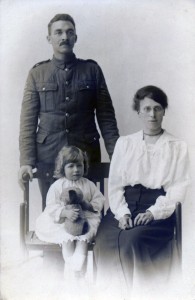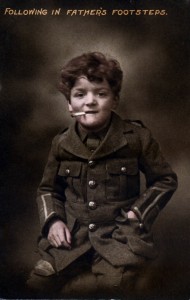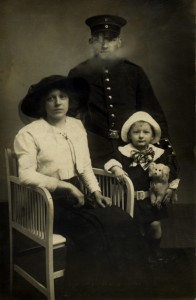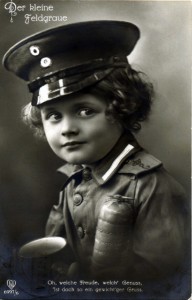Guest blog by Clare Gibson, Founder of The Army Children Archive (TACA).
The Army Children Archive (TACA) [http://www.archhistory.co.uk] collects, preserves and shares information about British army children (the children of career soldiers serving in the British Army) and their history. As a virtual archive – a website – TACA is instantly accessible to anyone, anywhere. Sharing and collaboration are just as crucial to TACA as accessibility, and those who have contributed to it have added considerably to our knowledge and understanding of the impact that having a soldier as a father can have on a childhood, and, indeed, an adulthood.
To mark the centenary of the outbreak of the First World War, TACA recently launched its ‘The Army Children of the First World War’ [http://bit.ly/ArmyChildrenFWW] project. Because so many children’s civilian fathers joined the British Army as volunteers or conscripts between 1914 and 1918, TACA’s remit was widened to encompass all British children whose fathers served as soldiers during the First World War, and not just ‘barrack rats’, ‘pads’ brats’ or ‘army brats’ (all nicknames given to the children of professional British soldiers). After all, when your father is absent from home and facing very real danger, it matters little to a child what sort of soldier’s status he has been accorded.
The project’s core focus is two online galleries of images accessed via Flickr, as follows:
1) ‘The Army Children of the First World War: Faces and Families’ [http://bit.ly/ACFWWFaces] gallery consists of a set of photographic portraits of army children and their families photographed between 1914 and 1918. Any known information about the faces and families pictured, or any clues offered by the photographs themselves, accompany the images. Viewers are invited to fill any information gaps and, if possible, to identify these forgotten faces.
2) ‘The Army Children of the First World War: a Sentimental View’ [http://bit.ly/ACFWWSentimental] displays a selection of First World War-era sentimental postcards and ephemera featuring the children of soldiers, and children generally. These fall into various categories: many are patriotic, while some are heartening, and others are designed to tug at the heartstrings. All raise interesting questions about national perceptions during the First World War, and about how war affected those on the home front.
Each set’s original ten images is now being added to at the rate of one a week. Their collective visual impact, as well as the issues that individual images raise, are already providing food for thought, issues for discussion and entry points for further research for schools and historians.
TACA is also contributing these images to Europeana 1914–1918, a historically neutral and increasingly invaluable portal in providing detailed insights into how the citizens of Europe’s combatant and allied countries experienced the First World War. The images showcased by our project may have been ‘made in Britain’, but we feel that they also highlight the similar experiences and common feelings of innumerable children during the First World War, regardless of their nationality. Their countries may have been at war, and the soldier–fathers who faced each other across no-man’s land may have been enemies, yet their children must have been unwittingly united by the shared hardships that they endured on their respective home fronts, as well as by the powerful emotions – such as sadness at parting and joy on reunion, or incomprehension or despair at a father’s wounding or death – that blighted or lit up their lives during the First World War.
Historical distance, along with initiatives like Europeana 1914–1918 and, I believe, our own project, highlight humanity’s commonality and the shared experience of army children of all nations. For despite our differences, we are not so very different after all.
Clare Gibson
Founder, The Army Children Archive (TACA).
A question for you:
It is early days for ‘The Army Children of the First World War’ project, which will almost certainly be expanded over the next four years to enable others to contribute their own images and stories. In view of this, I have a question for you: should we further broaden the project’s collaborative scope to include a ‘The European Army Children of the First World War’ aspect? If you’d like to see this, do let us know. (You can send an e-mail to TACA: tommydrum@f2s.com; or tweet us: @ArmyChildren.)
Thought-provoking images like those that our project is showcasing [1 and 2], and their German equivalents [3 and 4], give us an insight into the experiences and preoccupations of those whose lives were shaped by the First World War. They also highlight how much we have in common, then as now, whatever our nationality.



